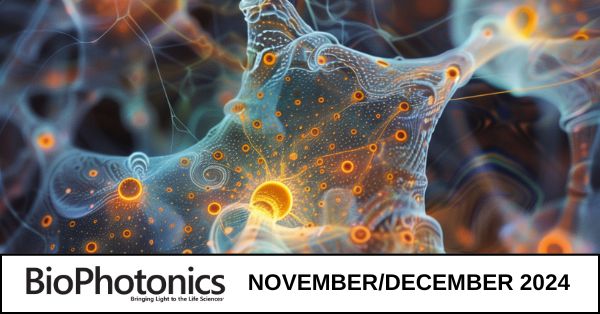Sep. 5, 2024

Raman Spectroscopy and Mohs Surgery for Basal Cell Carcinoma
Basal cell carcinoma (BCC) is the most common skin cancer in the world. The BCC treatment modality that produces the best cure rates and cosmetic outcomes is Mohs micrographic surgery. Despite this, the availability of Mohs is patchy because of limited capacity to process and assess histologically stained tissue sections intra-operatively. A combined autofluorescence-Raman spectroscopy technique that aims to streamline the process of Mohs surgery has been developed and trialed at the University of Nottingham. The research led to the development of a fully automated prototype device that can investigate the bottom surface of excised skin specimens and highlight residual BCC within 30 minutes. A recent clinical study on fresh Mohs skin specimens has shown that the autofluorescence-Raman instrument may identify BCC with a comparable accuracy to Mohs surgery. This technology may enable a Mohs-like Procedure in centers that do not have capacity for Mohs, reducing load on Mohs centers.
Key Technologies: Raman spectroscopy
Laser Damage Threshold in Dermatology
To prevent skin damage, it is crucial to understand the type and extent of damage that occurs at different energy threshold values. However, there is limited information available on this topic. Therefore, it is essential to collect data to establish a foundation for future experiments. It is widely recognized that improper use of laser radiation can cause significant harm. However, documentation on specific values such as laser thresholds is limited. The skin's structural inhomogeneity often leads to significant fluctuation in results. In this study, pig skin was used as a substitute for human skin. A carbon dioxide laser (CO2 laser) with a working wavelength of 10.6 microns was selected as the test laser due to its frequent use in dermatology, tumor surgery and dentistry.
Key Technologies: Lasers
Surface-OCT for Dermatology Applications
Optical coherence tomography (OCT) is a compelling imaging modality for biomedicine due to its ability to create 3D cross-sectional images of biological tissues with micron scale resolution. The approach can image up to 1 mm deep in tissues across a typical lateral range of 1 cm. Modern implementations of OCT provide >100dB dynamic range and acquisition speeds that permit real time imaging. State of the art research systems can achieve 1-10 micron resolution with most implementations producing 15-20 micron resolution. OCT has found widespread use in retinal imaging with many commercial instruments available. Although OCT has been researched for other applications including gastroenterology, cardiology, and dermatology, only a handful of commercially available systems are cleared for these fields. Here the use of OCT for imaging skin is discussed with an eye towards enabling clinical use, noting the significant advances made. Factors that will be considered are the imaging parameters that can be selected, how these align with clinical diagnostic goals and ultimately how these can be delivered to the market as a satisfying solution for dermatology in both the research lab and clinic.
Key Technologies: Optical coherent tomography
AI and Imaging in Dermatology
The gold standard in dermatology has historically been histopathology, but this is a laborious process, involving the staining of samples, and a variety of skin conditions can be conflated, even amongst doctors. New AI-driven computational techniques are allowing for digital staining; recent studies have shown that a convolutional neural network can transform reflectance confocal microscopy images into virtually stained images. But AI is a work in progress, as a study at the Catalan Institute showed tha that the general accuracy of machine learning characterization of skin lesions is lower than dermatologists in real time. So this calls for an interdiscipinary approach which is being carried out by several companies and institutions, such as Ansys and Optotune, in the Intelligent Total Body Scanner for Early Detection of Melanoma (iToBoS) project, an EU-centered AI diagnostics platform combining a total body scanner with computer-aided diagnostics. This provides multiple cameras with liquid lenses, offering different optical wavelengths. And other companies like AI Medical Technology have developed a mobile app, Dermalyzer, which involves a dermatoscope in front of a smartphone camera, that has shown value in differentiating melanoma from less harmful skin lesions. The ultimate goal is to utilize AI to enhance the often scant information available to dermatologists - and general practitioners - in traditional examinations.
Key Technologies:AI, microscopy
Download Media Kit